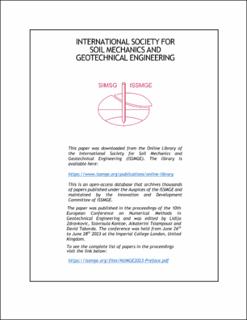Accounting for effects of cyclic loading in design of offshore wind turbine foundations
Lecture
Published version
Permanent lenke
https://hdl.handle.net/11250/3103004Utgivelsesdato
2023Metadata
Vis full innførselSamlinger
- NGI articles [1061]
Sammendrag
In the design of foundations for offshore structures, it is generally important and required to consider the effects of cyclic loading caused by waves and wind. Therefore, NGI has developed a framework since the early 1970s that has been utilized in the design of various offshore structures. However, there are currently no accepted guidelines on how to account for this effect in design of monopile foundations. With the introduction of large-diameter monopile foundations for offshore wind turbines, it has become necessary to revisit and modify our existing procedure. The primary difference between monopile foundations for offshore wind turbines and those for the oil and gas industry is that the design of the former is typically not governed by a global failure mechanism during extreme storm loading because of their rather ductile response. Additionally, offshore wind parks often consist of over one hundred turbines, which necessitates more efficient design methods to optimise each individual foundation within a huge field with varying soil stratigraphy. This paper presents an efficient procedure using the finite element method to account for the effects of cyclic loading in design of monopile foundations. Furthermore, it provides recommendations for further improvements.
